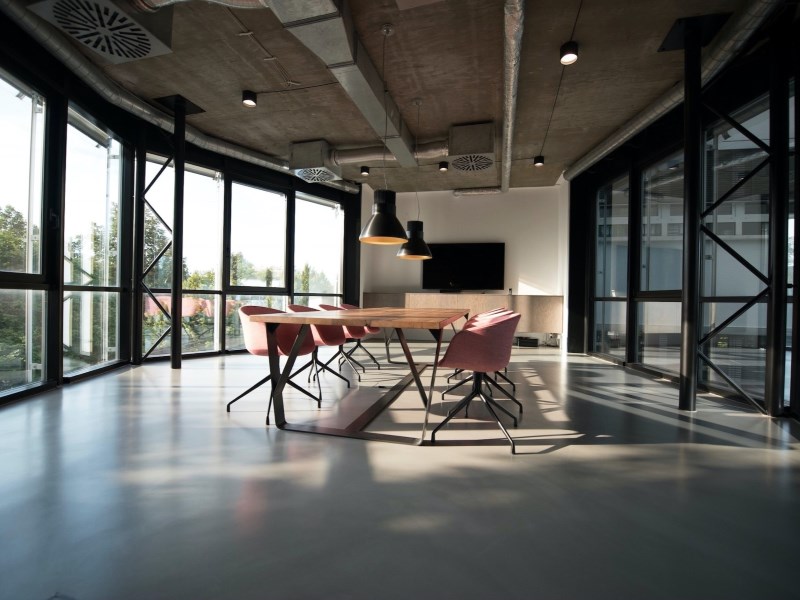Steps in Building a Business Continuity Strategy in Facility Management

Ever had that sinking feeling when you realize your facility’s critical systems can fail, leaving you in a state of panic? Or that knot of anxiety that tightens when you discover a major equipment malfunction that brings operations to a grinding halt?
It’s like being in a high-speed car chase, but you’re driving with a blindfold on. You’re determined to keep your facility running smoothly, but all the while, you anticipate the looming disaster around the next corner.
But it doesn’t have to be that way. That’s where a business continuity strategy comes into play.
It’s your lifeline during times of crisis, outlining the procedures and guidelines you need to follow to keep your organization afloat.
But here’s the thing: many facility managers underestimate the importance of having a solid strategy in place.
You might think, “I can handle it when the time comes. I’ll deal with it on the fly.”
But that’s a risky mindset. Without a well-thought-out facilities business continuity plan, you’re putting your staff, resources, and even profitability at stake.
In this article, we’ll delve into the next-gen steps in building a business continuity strategy in facility management, exploring best practices, key considerations, and real-world examples.
Put on Your Risk Goggles!
Imagine you’re managing a corporate office building. You need to consider various risks such as fire hazards, power outages, natural disasters, or even cybersecurity threats.
Each of these risks has the potential to disrupt your facility and affect business operations. By conducting a comprehensive risk assessment, you can identify these potential risks and their potential impact on facility management.
Once you’ve identified the risks, it’s time to put on your detective hat and uncover the critical functions that are essential for your facility’s smooth operation. These critical functions can vary depending on the nature of your facility, but they often include security, HVAC systems, electrical infrastructure, and communication networks.
Prioritizing the continuity of these functions ensures that even in the face of disruptions, your facility can continue to operate efficiently.
For example, if a power outage occurs, identifying the critical function of electrical infrastructure will prompt you to have backup generators or alternative power sources in place to keep the lights on and essential systems running. Similarly, understanding the potential impact of a cybersecurity threat will lead you to prioritize the continuity of your facility’s data security measures.
Crunch the Numbers and Reveal the True Impact of Disruptions
Understanding the potential impact of disruptions is crucial for building a robust business continuity strategy.
That’s where the Business Impact Analysis (BIA) swoops in to save the day.
Think of it as your trusty sidekick, helping you crunch the numbers and reveal the true impact of disruptions.
First, you embark on a thorough analysis of your facility’s operations and processes. You leave no stone unturned, examining every nook and cranny to identify the critical functions that keep your facility running smoothly.
Whether it’s HVAC systems, security protocols, or maintenance procedures, you assess their significance and prioritize their continuity.
But it doesn’t stop there. The BIA dives into the financial and operational implications of potential disruptions. You put on your detective hat, investigating the potential consequences of a power outage, a cyber attack, or even a natural disaster. By quantifying the impact in terms of downtime, revenue loss, and customer satisfaction, you gain a clear understanding of the risks at hand.
Furthermore, the BIA uncovers the intricate web of dependencies and interdependencies within your facility. It reveals the domino effect that disruptions can trigger, highlighting the interconnectivity between various systems, departments, and stakeholders. For example, a failure in the electrical infrastructure can disrupt not only lighting and equipment but also impact security systems and employee productivity.
Perfect Your Evacuation Skills!
When unforeseen disasters hit, you want to be the expert who swiftly guides everyone to safety, creating a sense of security and preparedness.
Your emergency response plan is the ultimate playbook for handling various situations, from evacuation to sheltering and even lockdown scenarios. It’s like having a superhero team ready to leap into action, ensuring the safety and well-being of everyone within your facility.
For example, imagine a facility manager responsible for a large office building. He creates a comprehensive Emergency Response Plan that outlines the evacuation routes, designated assembly points, and roles for each team member during emergencies. They also set up communication channels, ensuring quick and efficient dissemination of critical information.
When an unexpected fire breaks out on one of the floors, His well-prepared response plan springs into action. Employees follow the clear evacuation procedures, emergency response teams act promptly, and communication channels keep everyone informed about the situation. Thanks to the well-rehearsed plan, everyone safely evacuates the building, and the fire is quickly brought under control.
By developing a top-notch emergency response plan, facility managers like you can instill confidence, protect lives, and safeguard the continuity of business operations, making them the real heroes in the world of Facility Management.
Identify Your Key Allies!
Key allies could include facility staff, tenants, vendors, local authorities, and emergency services. By involving them in the crisis communication plan, you create a united front to tackle any emergency head-on.
For instance, imagine a scenario where a major water pipe bursts in a commercial building, flooding several floors.
In this case, your key allies might include facility staff to coordinate immediate evacuations and shut off water supplies, tenants to inform them about the situation and safety measures, vendors to assist with repairs, and local authorities or emergency services to manage the overall response.
By integrating digital platforms for real-time communication, like mobile apps or group messaging systems, you ensure rapid dissemination of critical information during the crisis.
This approach enhances the facility’s responsiveness, minimizes disruptions, and showcases a coordinated effort that builds trust among stakeholders.
Restore Critical Functions to Bounce Back
When the unexpected strikes and disrupts critical functions in facility management, it’s time to put our service recovery strategies into action.
The goal? To bounce back stronger than ever and restore normal operations swiftly. Developing these strategies is a crucial step in building a robust business continuity plan for facility management.
First and foremost, we analyze the impact of the disruption and identify the critical functions that need immediate attention. With a clear understanding of what needs to be restored, we devise comprehensive strategies to get things back on track.
For example, if a facility is damaged due to a natural disaster, we might establish alternate facilities or activate remote work capabilities to ensure uninterrupted service delivery.
Collaboration is key in the recovery process. We work closely with our trusted vendors and suppliers, leveraging their expertise and resources to expedite the recovery. By forging strong partnerships, we can access necessary equipment, materials, and services promptly, minimizing downtime and ensuring a timely recovery.
Don’t leave any vulnerabilities unchecked!
When it comes to building a business continuity strategy in facility management, one crucial step is implementing preventive measures to ensure vulnerabilities are not left unchecked. This proactive approach helps safeguard critical systems and functions from potential disruptions.
To begin, it is essential to establish preventive maintenance programs for critical systems. Regular maintenance and servicing can prevent unexpected breakdowns and identify any underlying issues before they escalate. By staying ahead of maintenance needs, facility managers can minimize the risk of system failures and ensure smooth operations.
Another vital aspect is integrating redundancy and backup systems for key functions. Having backup systems in place provides an additional layer of protection against potential failures. Redundancy ensures that if one system fails, there is a backup ready to take over, minimizing downtime and maintaining continuity.
Conducting regular inspections and audits plays a significant role in identifying potential vulnerabilities. By regularly assessing the facility’s infrastructure, equipment, and processes, facility managers can detect any weak points or areas that require improvement. This proactive approach allows for timely corrective actions and mitigates the risk of unexpected disruptions.
Train Like There’s No Tomorrow
When it comes to building a solid business continuity strategy in facility management, one crucial step stands out: training and testing the plan. In this stage, we embrace the motto “train like there’s no tomorrow” to ensure our emergency response teams are prepared for any situation.
Regular training sessions are the backbone of our preparedness efforts. We gather our teams, share knowledge, and sharpen their skills in handling emergencies. Through interactive sessions, we empower our team members with the confidence and expertise to navigate challenging scenarios.
But training alone is not enough. We go a step further by organizing drills and simulations that put our plan to the test. These real-life scenarios allow us to assess the effectiveness of our strategies, identify areas for improvement, and fine-tune our response procedures. It’s like a dress rehearsal, preparing us to perform flawlessly when the spotlight is on.
Training and testing the plan are not just checkboxes to tick off. They are ongoing processes that ensure our facility management team is always prepared and ready to handle any disruption that comes our way. With each training session and simulation, we become stronger, more resilient, and better equipped to safeguard our operations.
Spot Threats Before They Strike
By exploring technology solutions like facility management system software, organizations can gain a competitive edge in maintaining business continuity in facility management.
Automation and monitoring systems take center stage, allowing for early detection of potential issues. These systems can monitor critical functions, equipment, and infrastructure, providing real-time insights and alerts.
They act as a watchful eye, ensuring that any deviations or anomalies are promptly identified and addressed before they escalate into major disruptions.
Moreover, leveraging data analytics becomes a game-changer in proactive risk management. By collecting and analyzing vast amounts of data, facility managers can uncover patterns, identify trends, and predict potential risks.
This data-driven approach enables them to make informed decisions, implement preventive measures, and allocate resources effectively.
Integrating technology solutions not only enhances operational efficiency but also empowers facility managers to take a proactive stance in managing risks.
Keep Your Plan Supercharged
You’ve created a business continuity plan that’s your trusted companion in times of crisis. But here’s the secret to staying ahead of the game – keeping that plan supercharged through regular reviews and updates.
In the world of facility management, change is the only constant. That’s why maintaining business continuity in facilities management requires establishing a regular review process for your business continuity strategy.
Take a step back, gather your team, and evaluate the effectiveness of your plan based on real-life scenarios.
Did it hold up when faced with challenges? Were there any gaps or areas for improvement?
But don’t stop there. Embrace feedback from your team, stakeholders, and even external experts. They bring fresh perspectives and insights, helping you address emerging risks that might have flown under the radar. Their input can be invaluable in making updates and enhancements to your plan.
Let’s say your facility experienced a recent power outage that lasted longer than anticipated. During the review process, you realized that your plan lacked sufficient measures to handle extended power disruptions.
With this feedback, you can update your plan to include backup power solutions or alternative work arrangements to keep operations running smoothly.
Remember, a supercharged plan is a living document – one that evolves and adapts to the ever-changing landscape of facility management.
Promote a Culture of Preparedness
When it comes to building a business continuity strategy in facility management, engaging stakeholders and promoting a culture of preparedness is essential. It’s not just about having a plan on paper; it’s about fostering a mindset of resilience within the organization. This involves engaging facility management staff in the planning and implementation process.
By involving your team in the development of the business continuity plan for facility management, you create a sense of ownership and responsibility. Their input and expertise can uncover valuable insights and ensure that the plan reflects the unique needs of the facility. Through training sessions, drills, and regular communication, you can empower your staff to become active participants in building resilience.
But it doesn’t stop there. Collaboration with external stakeholders is equally crucial. This includes partnering with local authorities and emergency services. By establishing relationships and open lines of communication, you can tap into additional resources and expertise in times of crisis. They can provide guidance, support, and coordination during emergency situations, enhancing the effectiveness of your business continuity efforts.
Overall, engaging stakeholders and building resilience is about creating a shared commitment to preparedness. It instills a sense of confidence and readiness within the organization, ensuring that everyone is prepared to respond effectively to any disruption that may come their way.
Conclusion
As facility managers, it’s crucial to recognize the importance of building a solid business continuity strategy. By taking proactive steps such as implementing preventive maintenance programs, integrating redundancy systems, and conducting regular inspections, you can ensure smooth operations and minimize disruptions.
With FieldCircle, you can streamline preventive maintenance tasks, automate inspection processes, and stay ahead of potential risks. By embracing a proactive approach and leveraging technology through facility automation solutions, you can effectively manage your facility’s maintenance needs, identify vulnerabilities, and address them before they escalate into major issues.
These measures not only protect your business from unexpected downtime but also contribute to long-term cost savings and increased productivity. The benefits of facility management extend beyond operational efficiency, ensuring well-maintained assets, optimized resource utilization, and a safer work environment. So, whether you’re a startup founder or a seasoned facility manager, understanding the difference these strategies can make is key.
Embrace a proactive approach, invest in preventive measures, and stay ahead of potential risks. By doing so, you’ll build a resilient facility management system that can weather any storm and keep your operations running smoothly.


